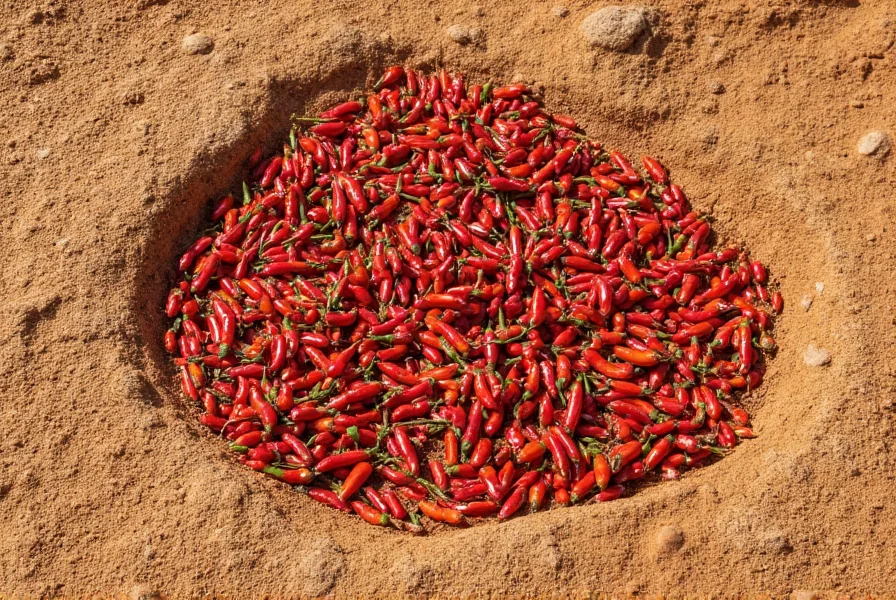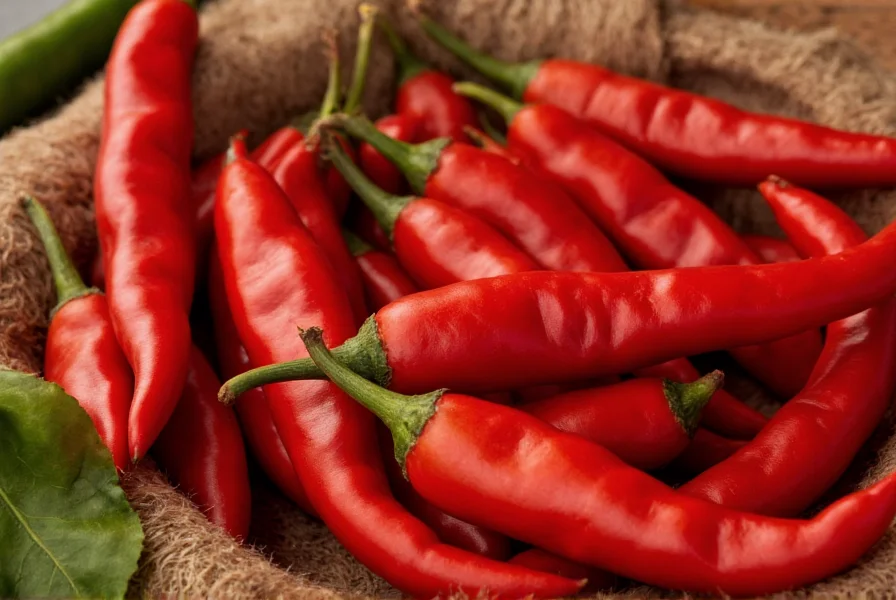For thousands of years before European contact, chili peppers formed an essential part of Mesoamerican cuisine and culture. These fiery fruits weren't just culinary staples—they held religious significance and served medicinal purposes across ancient civilizations including the Maya, Aztec, and Olmec cultures. The word "chili" itself comes from the Nahuatl (Aztec language) word "chīlli," demonstrating the deep indigenous roots of these plants.
The Ancient Origins of Chili Peppers
Scientific research has pinpointed the Balsas River Valley in southwestern Mexico as the most likely epicenter of chili domestication. Genetic studies of wild and cultivated Capsicum species reveal that Capsicum annuum, which includes many common varieties like jalapeños and bell peppers, was the first species to be domesticated.

Unlike many crops that were gradually improved through selective breeding, early Mesoamericans worked with naturally occurring variations in pungency, color, and shape. The capsaicin that gives chilies their heat evolved as a defense mechanism against mammals, but birds—which don't feel the burn—helped spread wild chili seeds across the landscape.
Archaeological Evidence of Early Chili Use
Researchers have uncovered compelling evidence of ancient chili cultivation through several key discoveries:
| Site | Location | Time Period | Significance |
|---|---|---|---|
| Tehuacán Valley | Mexico | 4100-6100 BCE | Oldest known domesticated chili remains |
| Coxcatlán Cave | Mexico | 5000 BCE | Chili seeds found alongside early maize |
| Puebla | Mexico | 3000 BCE | Chili residue in ancient pottery |
| Peru | South America | 6000 BCE | Early evidence of Capsicum chinense varieties |
These findings demonstrate that chili peppers were already integral to human diets long before the development of complex civilizations in the Americas. Chemical analysis of ancient cooking vessels has revealed capsaicin residues, proving that early Mesoamericans were incorporating chilies into their food preparation techniques.
Chili Pepper Species and Their Native Ranges
While Capsicum annuum represents the most widely cultivated species today, five domesticated Capsicum species evolved across the Americas:
- Capsicum annuum - Originated in Mexico (includes jalapeños, serranos, cayenne)
- Capsicum chinense - Originated in the Amazon basin (includes habaneros, Scotch bonnets)
- Capsicum frutescens - Originated in South America (includes tabasco peppers)
- Capsicum baccatum - Originated in the Andes (includes aji peppers)
- Capsicum pubescens - Originated in the Andes (includes rocoto peppers)
Despite the scientific name Capsicum chinense suggesting Chinese origins, all chili species are native exclusively to the Western Hemisphere. The misnomer arose when European taxonomists mistakenly believed these extremely hot varieties came from China.
The Global Journey of Chili Peppers
Chili peppers remained confined to the Americas until Christopher Columbus's voyages in the late 15th century. Mistakenly believing he had reached India, Columbus called these pungent fruits "peppers" due to their similarity to black pepper (Piper nigrum), which was highly valued in Europe.
The true global dissemination began with Spanish explorer Hernán Cortés, who brought chili seeds back to Europe after conquering the Aztec Empire in 1521. From Spain, chilies spread rapidly along established trade routes:
- 1542 - Portuguese traders introduced chilies to Africa and Asia
- 1550s - Chilies reached India, where they quickly became integral to regional cuisines
- 1570s - Chinese records document the arrival of chilies via maritime trade
- 1600s - Korean peninsula adopted chilies, transforming their culinary traditions
Within just 150 years of European contact, chili peppers had been incorporated into cuisines across Africa, Asia, and Europe—despite having no presence in these regions for thousands of years. Their rapid adoption demonstrates how perfectly they complemented existing culinary traditions while offering preservative qualities in warm climates.
Chili Peppers in Pre-Columbian America
Before European contact, indigenous Americans had developed sophisticated agricultural techniques for cultivating chilies. The Maya used them in religious ceremonies, the Aztecs included them in tribute payments, and Andean cultures developed freeze-drying techniques to preserve aji peppers.
Chilies served multiple purposes beyond flavoring food:
- Medicinal applications for pain relief and digestive issues
- Preservation of meats and other foods
- Religious and ritual significance
- Natural pest deterrents in agriculture
- Trade commodities across Mesoamerican networks
Anthropological evidence suggests that chili consumption was nearly universal across pre-Columbian American societies, with regional variations in preferred varieties and preparation methods. The integration of chilies with maize, beans, and squash formed the nutritional foundation of many ancient American diets.
Modern Chili Diversity and Genetic Research
Today, there are over 3,000 documented varieties of chili peppers worldwide, all descended from those original Mesoamerican cultivars. Modern genetic research continues to uncover fascinating details about chili domestication:
- Studies show multiple independent domestication events across the Americas
- Mexico maintains the greatest genetic diversity of wild and cultivated chilies
- Some heirloom varieties preserve genetic markers from pre-Columbian times
- Recent research has identified specific genes responsible for capsaicin production
Contemporary agricultural scientists work with indigenous communities in Mexico to preserve ancient chili varieties that might hold genetic solutions for climate-resilient crops. These preservation efforts recognize that the original center of chili diversity in Mexico represents an irreplaceable genetic resource.
Understanding Chili Nomenclature
The terminology surrounding these peppers often causes confusion. While "chili," "chile," "chilli," and "chile pepper" all refer to the same plants, regional naming conventions vary significantly:
- Chili/Chile - Preferred spelling in Mexico and much of the Americas
- Chilli - Common spelling in British English and some Asian countries
- Pepper - Added in English to distinguish from chili powder (a spice blend)
- Hot peppers - General term used in culinary contexts
The scientific classification remains consistent regardless of common names, with all domesticated varieties belonging to the Solanaceae (nightshade) family and the genus Capsicum.
Frequently Asked Questions About Chili Origins
Did chili peppers originate in India as their name might suggest?
No, chili peppers did not originate in India. The name confusion comes from Christopher Columbus, who mistakenly believed he had reached India when he encountered chilies in the Caribbean. All chili species are native exclusively to the Americas, with the earliest domestication occurring in Mexico approximately 6,000 years ago.
How did chili peppers spread so quickly around the world after European contact?
Chili peppers spread rapidly due to several factors: their ease of cultivation, long shelf life when dried, preservative qualities, and ability to enhance flavors in diverse cuisines. Portuguese and Spanish traders actively distributed chili seeds along established maritime trade routes, and local populations quickly adopted them because they thrived in tropical and subtropical climates worldwide.
What's the difference between black pepper and chili peppers?
Black pepper (Piper nigrum) and chili peppers (Capsicum species) are completely unrelated plants. Black pepper is a vine native to South India that produces piperine for heat, while chili peppers are nightshade plants native to the Americas that produce capsaicin. Columbus called chilies "peppers" because their pungency reminded him of black pepper, which was highly valued in Europe at the time.
Which country consumes the most chili peppers today?
China is currently the world's largest consumer of chili peppers, followed by India, Mexico, Thailand, and Indonesia. This is particularly interesting considering that chilies only arrived in Asia in the 16th century. Mexico, where chilies originated, remains among the top consumers per capita, with an average consumption of approximately 11 kilograms per person annually.
Are wild chili peppers still found in their native regions?
Yes, wild ancestors of domesticated chili peppers still grow in their native regions across Mexico and Central America. Researchers have identified wild populations of Capsicum annuum in the Chihuahuan Desert and other regions of Mexico. These wild varieties typically produce much smaller fruits with higher capsaicin concentrations than their domesticated counterparts.











 浙公网安备
33010002000092号
浙公网安备
33010002000092号 浙B2-20120091-4
浙B2-20120091-4